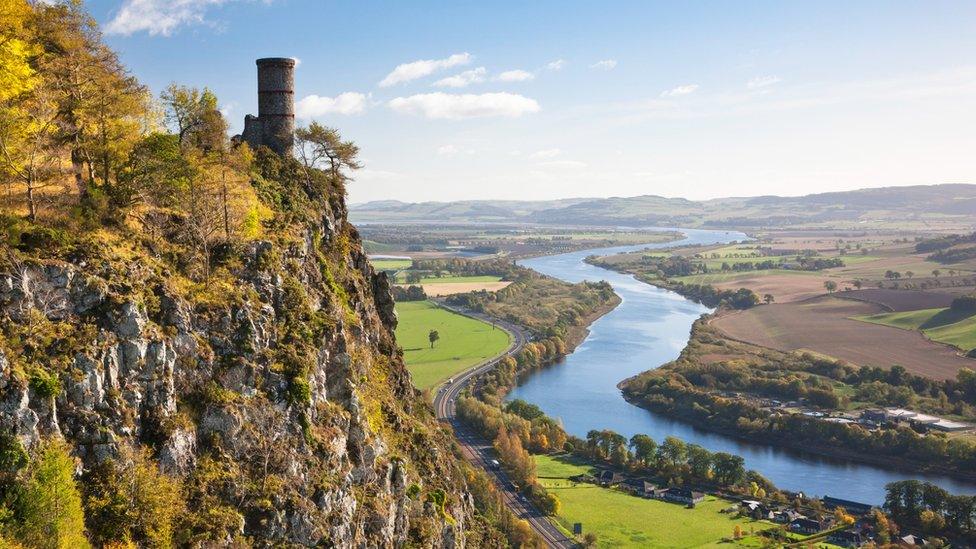Monuments, murals, and mosaics on the Dundee public art trail
- Published
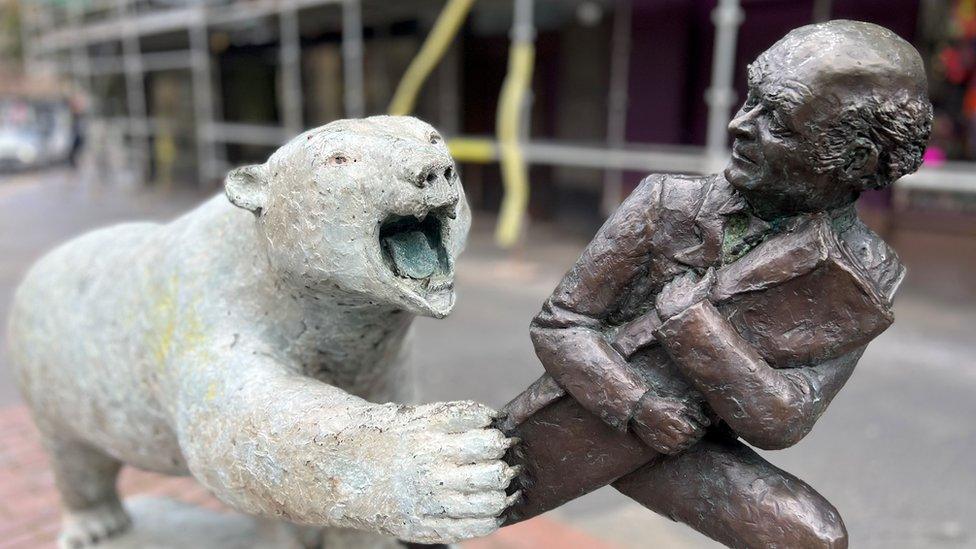
David Annan's Bruin depicts an escaped polar bear's rampage through Dundee in 1878.
From giant coins to dragons, murals to monuments, Dundee has more than 600 pieces of public art scattered around the city.
Some, like Oor Wullie and Desperate Dan, are well kent faces.
Others are more obscure and even highlight issues including mental health and climate change.
A new cycle trail, external exploring more than 50 artworks has been launched to complement popular walking tours, external of the murals, monuments, and mosaics.

Many of Dundee's famous comic strip characters like Oor Wullie have been immortalised
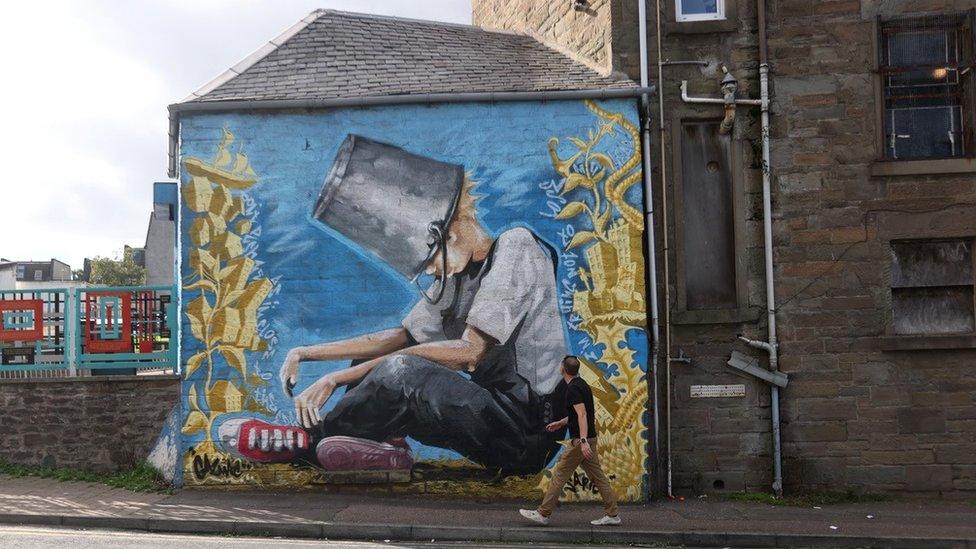
Oor Wullie has also been used to highlight mental health in this 2019 mural by Gazmac and Sapien
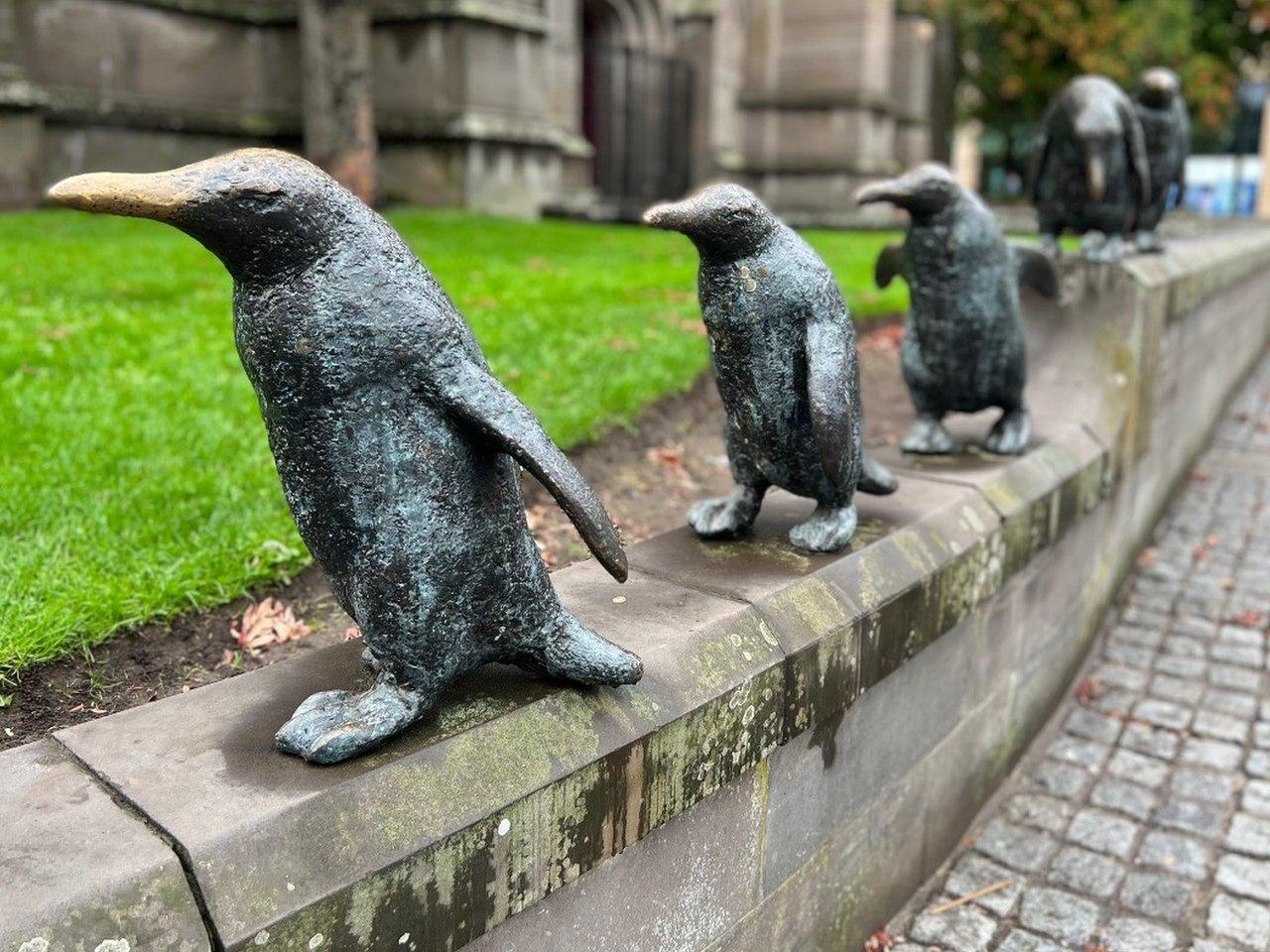
Matthew Jarron, Dundee University's curator of museum services, leads guided tours telling the stories behind the attractions.
He said: "Public art is wonderful because it's all around us.
"It's not like you have to go especially into an art gallery and look at particular painting or whatever.
"It gives us a sense of community, it makes makes us feel that the particular place that we're in is unique."
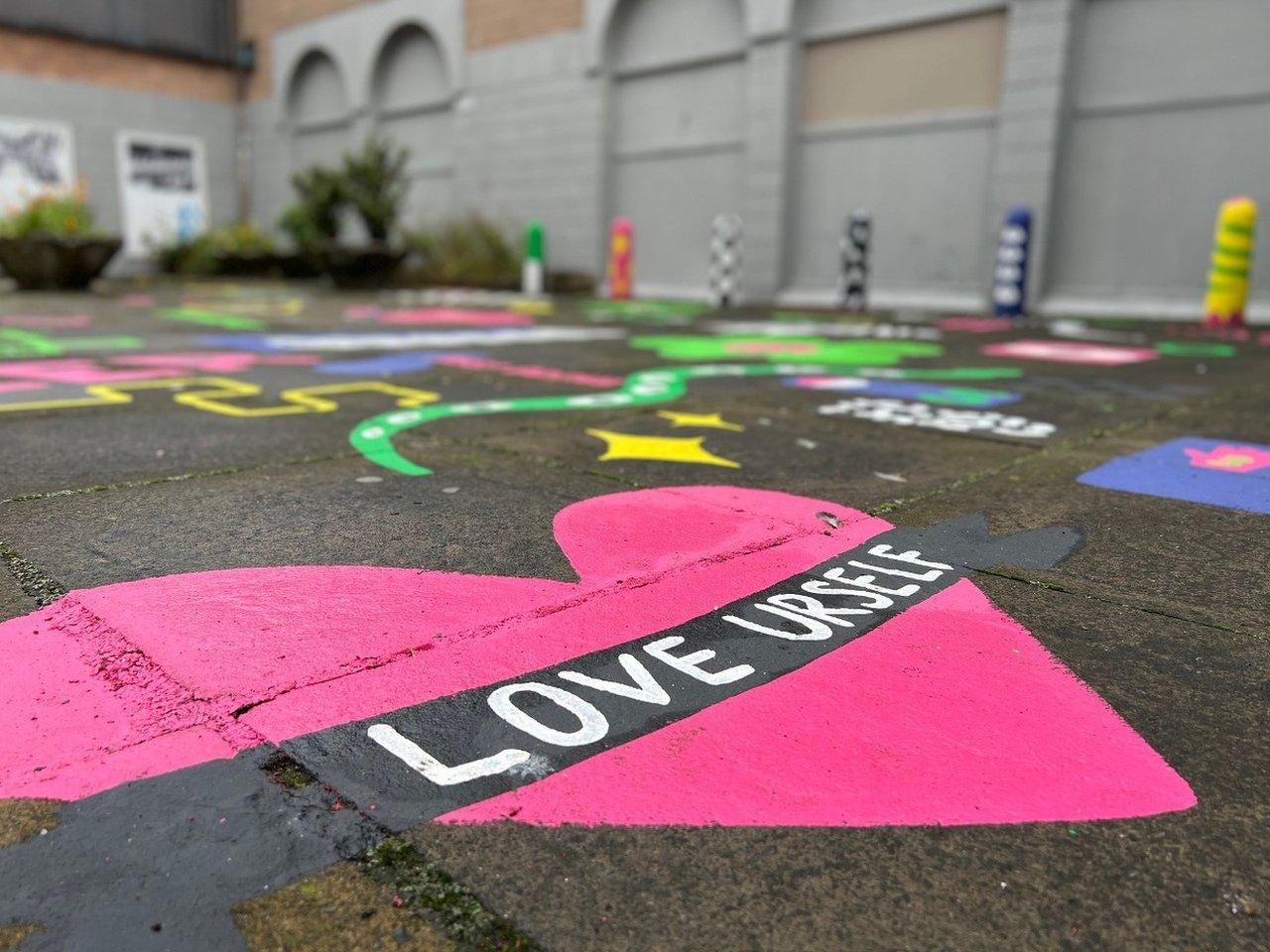
The artworks include murals and street paintings
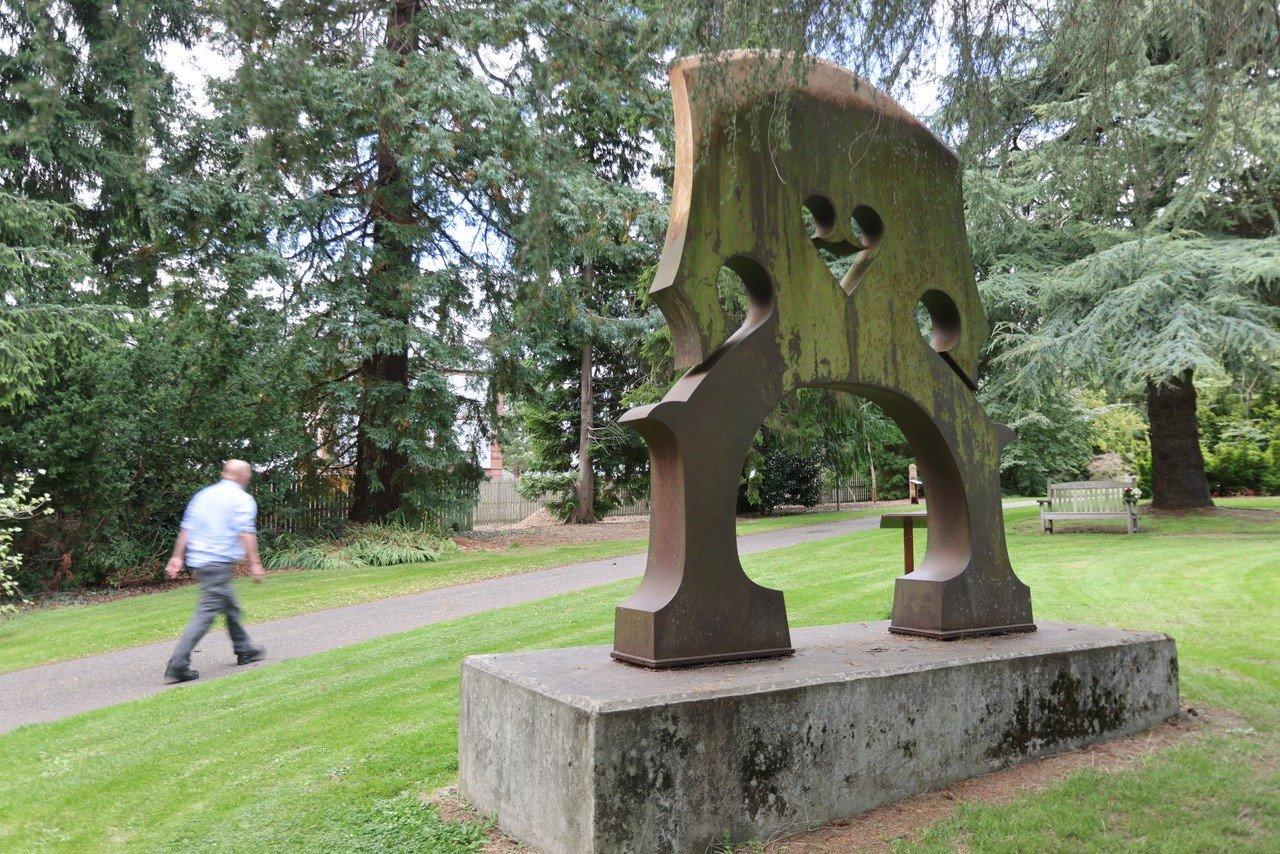
Ron Martin's violin bridge sculpture can be found in the University of Dundee Botanic Garden.

Lee Simmons' Tay Whale references Dundee's maritime history
Many of the pieces relate to Dundee's maritime history, including artist Lee Simmons' Tay Whale structure and David Annan's Bruin.

Other stories from Tayside and Central

Bruin was a polar bear brought back by whalers in 1878, which escaped and terrorised city centre shoppers and a local draper, who is also immortalised in the artwork.
Matthew said: "Eventually, people managed to capture the bear, but for that brief moment he was asserting his freedom and independence.
"The sculpture wonderfully celebrates this moment where this poor chap has been terrorised by the bear."
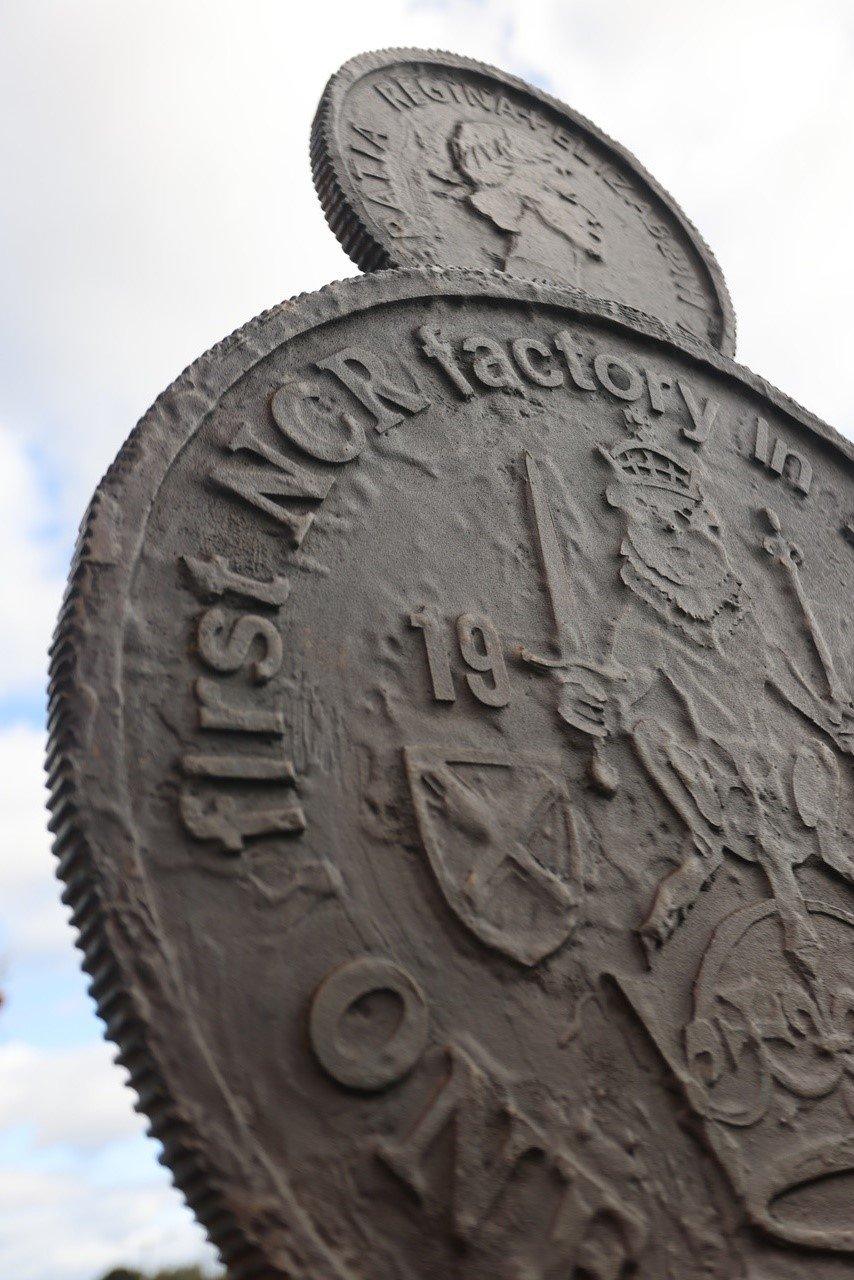
The city's first NCR factory, which made cash machines, is reflected in this new artwork by Jeremy Cunningham
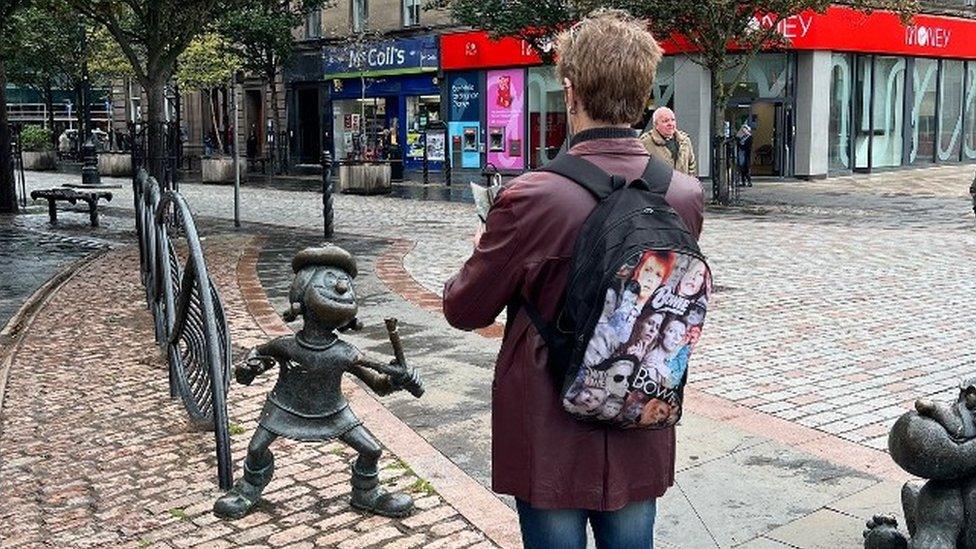
The city centre sculptures are popular with visitors to the city
The sculpture is one of many pieces celebrating the more unusual aspects of the city's history.
Matthew said: "That's one of the things that has always been good, rather than having statues of notable great and the good, although we have a few of them as well.
"The public art that we have tends to celebrate more interesting and unusual things."
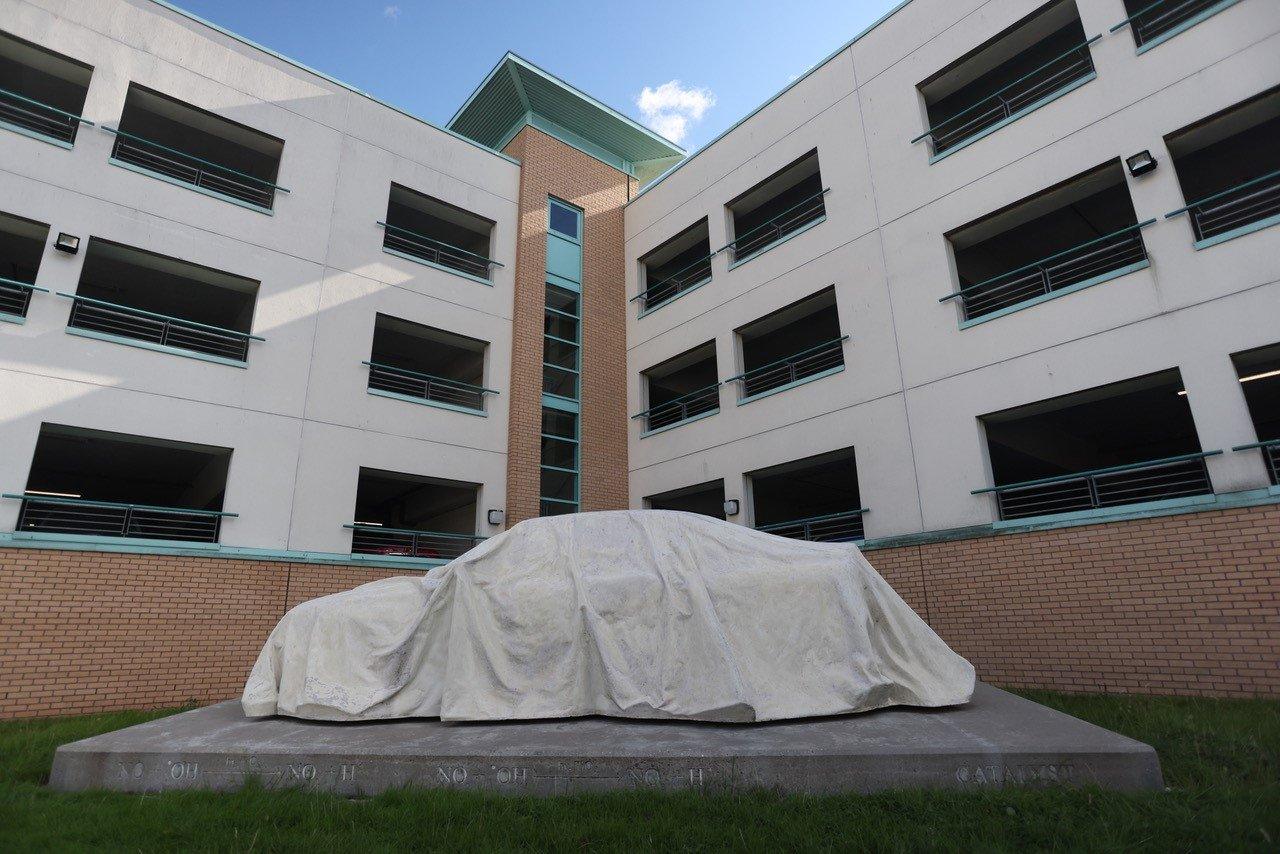
Dalziel and Scullion's Catalyst absorbs emissions from vehicle exhausts
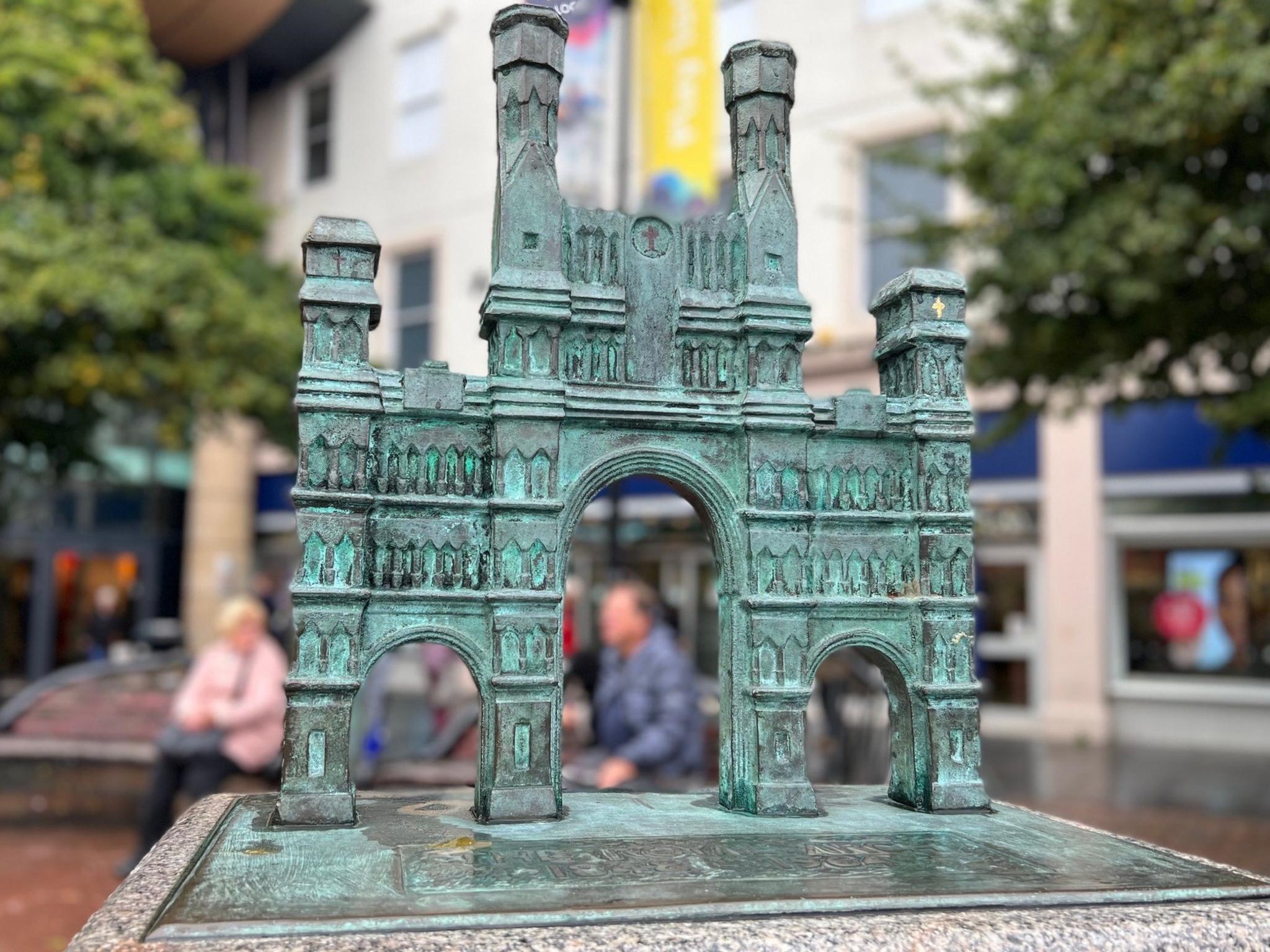
Dundee's Royal Arch, which was demolished in 1964, lives on in this sculpture by Doug Cocker.
There are also serious points to be made among the playfulness of many of the public art pieces.
Dalziel and Scullion's Catalyst is a car sculpture made of a special cement which absorbs emissions from vehicle exhausts and converts them to harmless nitrates when it rains.
Matthew said: "You may have heard the idea that art improves your life - this is a sculpture in which the art is literally improving your life."
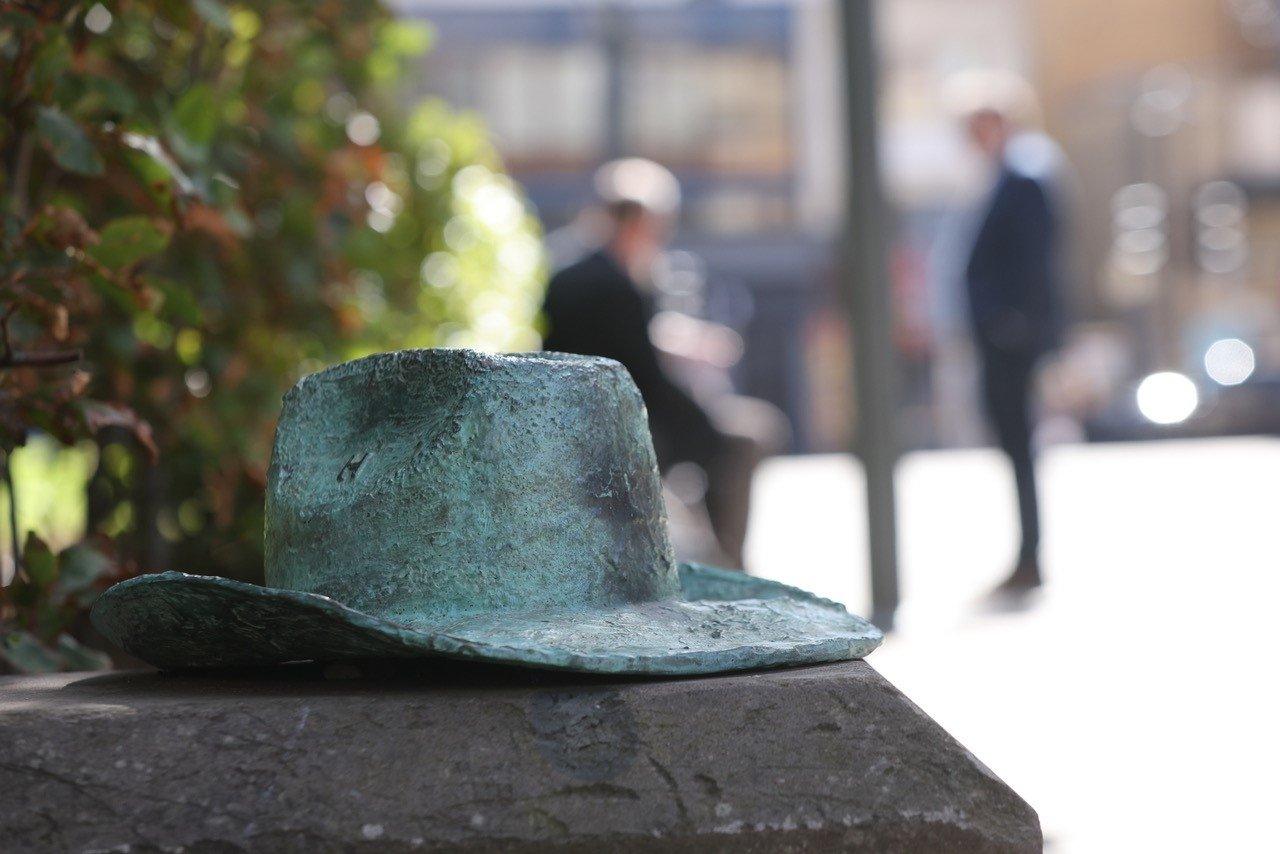
Artworks celebrating the Nine Incorporated Trades of Dundee are hidden around the city centre
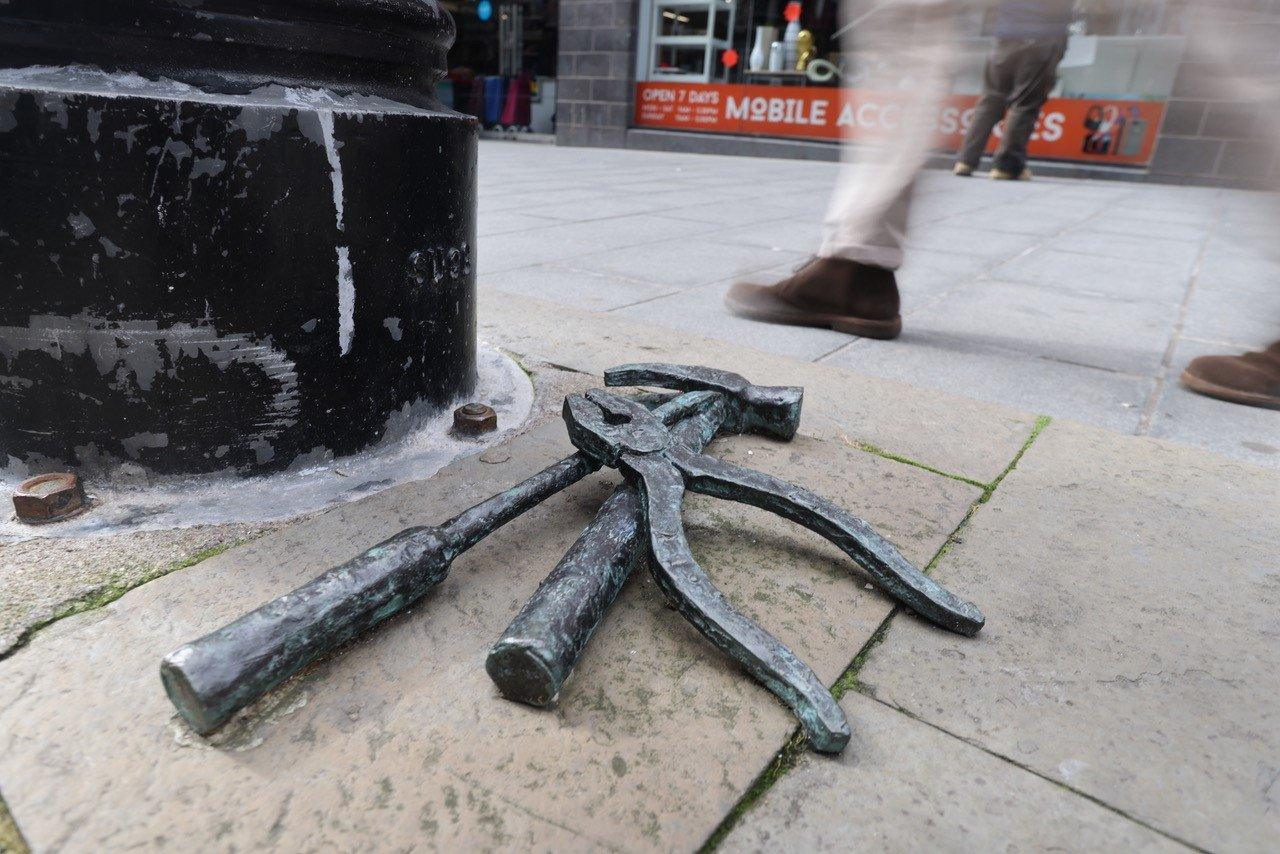
He added: "And the whale sculpture reflects the the famous story of the Tay whale, that escaped and swam up the river.
"But it also raises key environmental issues today about declining populations of whales and global warming.
"It's something that relates to our past, but also poses fundamental questions about our future."
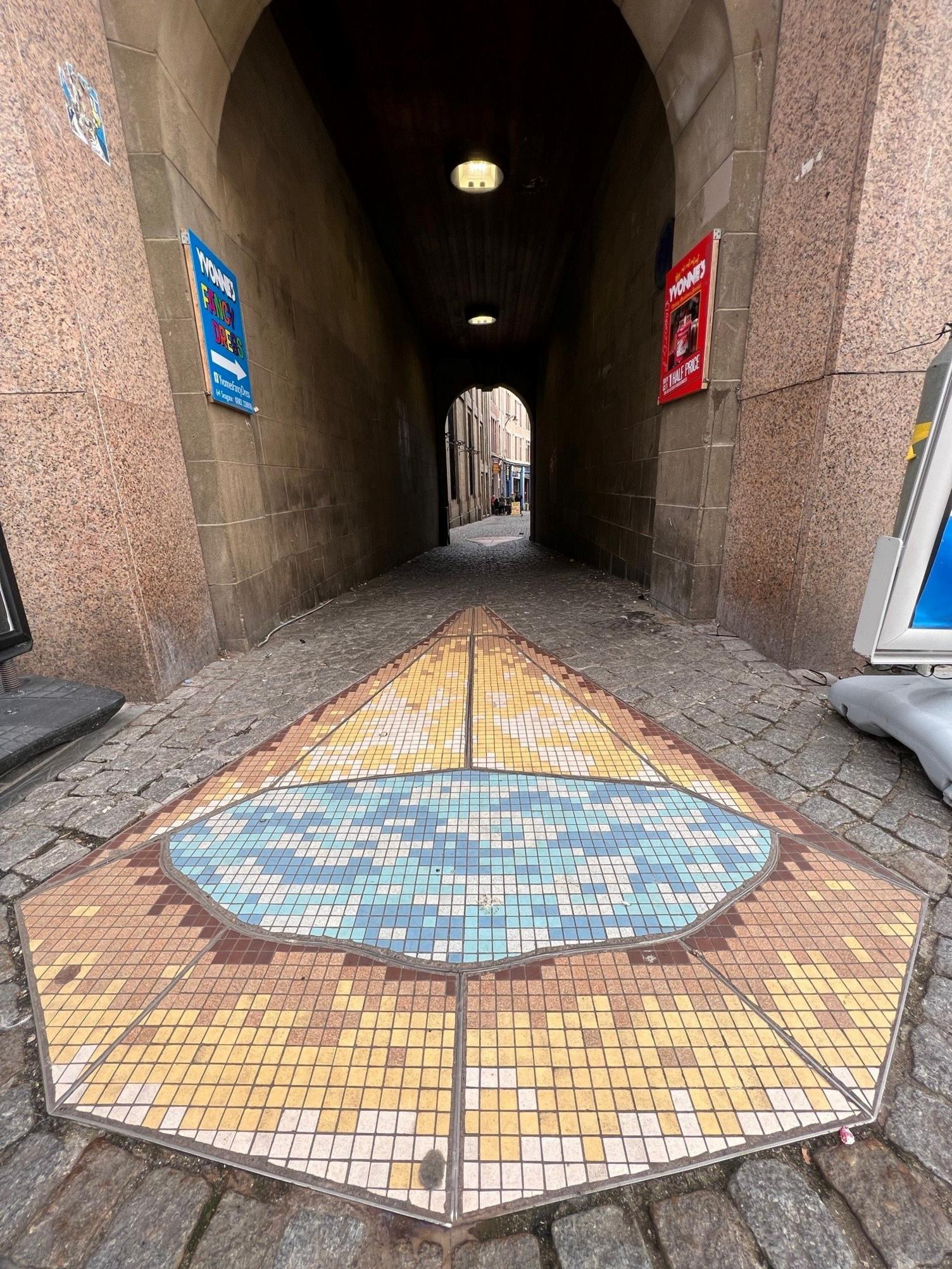
The fire theme is linked to local people burned as witches and the Watson's Whisky Bond fire of 1906.
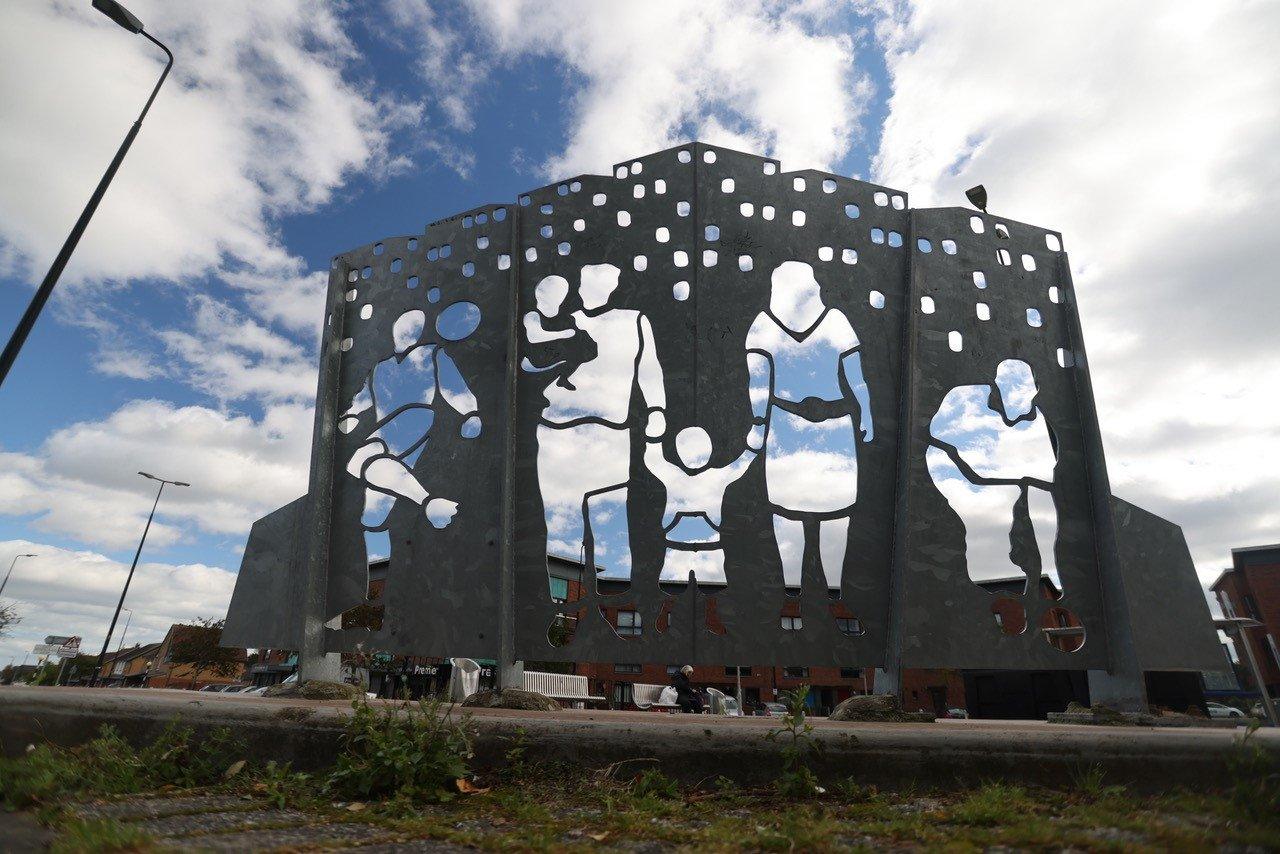
Tam Malley's Ardler Silhouette was designed with the help of the local community.
All images are copyrighted.
Related topics
- Published31 August 2022
